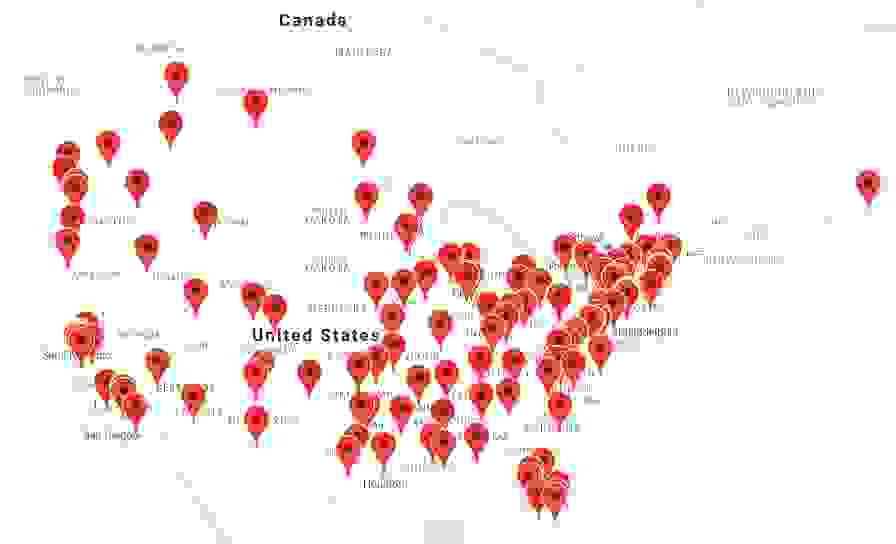On Cultural Competence: A Civic Action Group Interview
Leah Barto, correspondent for OPERA America, speaks with Ian Rye, chief executive officer, and Rebecca Hass, director of community engagement, Pacific Opera Victoria, about how their company has worked with Indigenous communities in Canada.
Interview Transcript (edited)
Leah Barto: Today we are talking about cultural competence, or the ability to understand and appreciate people who are different from ourselves. I am here with representatives from Pacific Opera Victoria in British Columbia to talk about how they have built cultural competence through some of their recent work with the Indigenous communities in Canada. I want to introduce Ian Rye, chief executive officer, and Rebecca Hass, director of community engagement. Ian, tell me about the types of activities you have engaged in that involve First Nations and Indigenous artists.
Ian Rye: Well, we began as a response to a national movement in Canada of truth and reconciliation, which is a process by which we as a country are addressing some troubling history with Indigenous peoples and the impact of settler culture on these peoples throughout generations and centuries. This project, on a national level, is engaging every single Canadian, addressing the wrongs of the past and helping to co-create a new future of understanding.
As an opera company, we might wonder what our role is and how we can make a contribution. Fortunately for us, we have a prominent Indigenous artist in our community who trained as an opera singer and a pianist, who began his singing career at Pacific Opera Victoria probably about fifteen to seventeen years ago, whose practice then evolved into purely a visual arts practice. He now sits as a senior member of our board of directors. His name is Carey Newman. He is a Coast Salish and a Kwagiulth carver. That deep history and relationship allowed us, as an opera company, as a settler organization, a seat at the table for reconciliation. Our first adventure was a piece that Carey designed for the Baumann Center, a community center for music. It houses the operations for the opera company, but is also a place for coming together for music and for music-making. On the ceiling is a thirty by thirty foot carved medallion by Carey. It set the opera in front of all of the other arts organizations in Western Canada to have a work of Indigenous public art at the center of its community space.
Leah: You mentioned the word “settler” organization. What do you mean by that?
Ian: I mean an organization that is managed by individuals with a certain amount of diversity, but tend not to be managed by Indigenous persons, the first peoples on this land, the very land where we work and make art. We are organizations and businesses that stole this land, many generations ago. As a settler organization it is important that we play that role, and it is important that we recognize how we got here.
Rebecca Hass: Well it has become, in the efforts towards reconciliation, a real opportunity to be grateful, to be reminded of the settler piece of our history. It puts me in touch with how amazing it is that we are on this land. It reminds me that I need to go to the people who actually used to occupy this land solely on their own, and have a relationship with them, and honor that past rather than "Forward I go, tally ho," which is how I tackle artistic projects. It reminds me that I am part of a larger diverse community I need to be in conversation with.
Leah: Could you tell me a little more about your particular position at Pacific Opera Victoria and how you go about as a network builder?
Rebecca: I am in a really interesting position that I have the opportunity to go to many communities, including the Indigenous community, to say, "What can I offer you?" As a performer and in an opera company, I am used to creating the show with end product in mind, with lots of creative ideas.
I will always have an idea when I go to a meeting, but I am learning to sit and have a cup of coffee with somebody, talk about our lives, and eventually move towards, “This is what we have as a resource, how might we partner together more powerfully that will be a benefit to your community?” It is a really interesting position to be in, and I find that I get amazing responses and excitement about what might be possible because it opens up their world.
Leah: I love your spirit of generosity in the way you describe this work. Ian, I would like to learn about Pacific Opera Victoria’s journey. What did you and your staff learn along the way in developing these projects?
Ian: Most recently we developed an Indigenous opera by the name of Missing, a brand new piece written by British Columbia’s foremost Indigenous author, playwright and filmmaker, Marie Clements. It tells the story of Canada's missing and murdered Indigenous women, of whom there are thousands of unsolved disappearances across this province alone. We as a country are just coming to terms with what has happened and continues to happen in these communities. Artists, such as Marie, are exploring this topic through several disciplines. In this case, an opera.
When we set about to stage an opera written by an Indigenous person about an Indigenous subject, with half the cast being Indigenous characters and the other half being non-Indigenous characters, we very quickly realized that we could not be producers who would present somebody else’s story to that community.
It would be disingenuous and would be appropriating of those cultural assets. So we set about to identify an individual in the community who knew us and who had credibility in the Indigenous community who could ultimately be at an administrative level, a leader.
We hired an Indigenous man of the Cowlish nation by the name of Ron Rice. He is not an artist or an arts administrator, but he has some connection and board work with other arts organizations. He developed an extensive network of Indigenous leadership and gathered them all together three times over an eight-month period in Victoria.
So we had these large sessions of sixty people for what we now call the Arts and Reconciliation forum to talk about the role of art in reconciliation and to talk about the subject that the opera was presenting. How do we present an opera like this to a settler audience and to an Indigenous audience not familiar with the art form of opera?
He came to the realization that opera was the art form most akin to the Pacific Northwest Coast cultural practice of the potlatch, an ancient tradition of mask, song, dance and storytelling. This is the closest cultural tradition to our artistic practice. It became a rallying cry for Indigenous leaders outside the arts to understand "Why opera?"
So this idea of leadership within that community to provide leadership to us, the opera company, who tend not to give leadership away often. The need to literally hand over the keys to an opera company was critical. That experience with Ron and the early development of Missing informed the need to continue in this practice. We needed an individual who had some authority and capacity to work in those spheres. And Rebecca is both a mezzo soprano with an accomplished opera career, a journalist and, over the last five years, has been deeply invested in exploring her Métis heritage and is now a practicing Métis. That is how we landed here.
Leah: It is a wonderful demonstration of how who represents an opera company is important, in terms of building trust and with other organizations who may be unfamiliar with the opera company. It also illustrates your spirit of being a generous partner and facilitating the environment for others to lead.
Ian: For more information people can visit https://www.pov.bc.ca/.
Leah: So much to learn, and thank you so much for sharing these great examples.
The Civic Action Group, a peer-learning cohort of company representatives examining how opera can increase its capacity to address community priorities through civic practice, was supported by the National Endowment for the Arts.





